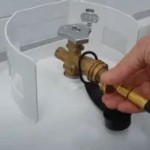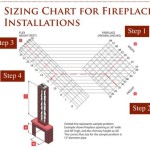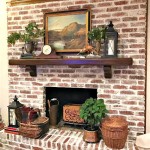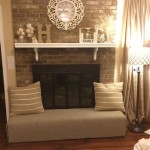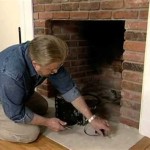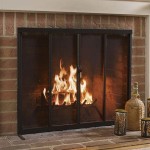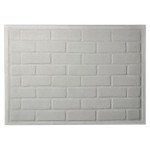Understanding Universal Fireplace Blower Kits: Enhancing Heating Efficiency and Comfort
Fireplaces are often perceived as sources of ambiance and aesthetic appeal, providing a focal point for relaxation and visual warmth. However, their efficiency as primary heating sources is often limited. A significant portion of the heat generated by a traditional fireplace escapes through the chimney, leading to energy waste and uneven room heating. Universal fireplace blower kits offer a pragmatic solution to this problem, enhancing the convective heat output and improving overall heating efficiency.
These kits are designed to be adaptable across a wide range of fireplace models and sizes, providing a flexible and cost-effective method for improving the functionality of existing fireplaces. By circulating warm air more effectively, they contribute to a more comfortable and evenly heated living space. The following sections will explore the key aspects of universal fireplace blower kits, highlighting their benefits, components, installation considerations, and troubleshooting tips.
Key Point 1: How Universal Fireplace Blower Kits Work
The core principle behind a fireplace blower kit is forced convection. Instead of relying solely on radiant heat and natural convection, the blower actively draws cool air from the surrounding room, passes it over the heated firebox, and then forces the warmed air back into the room. This continuous circulation significantly increases the amount of heat distributed, preventing it from escaping up the chimney.
A typical universal fireplace blower kit consists of several key components: a blower unit, which is essentially a fan designed to move air efficiently; a mounting bracket to secure the blower within the fireplace; a power cord for connecting to an electrical outlet; and a thermostat or speed control to regulate the blower's operation. Some kits also include a thermal disk switch, which automatically activates the blower when the firebox reaches a certain temperature and shuts it off when the fire cools down. This prevents the blower from running unnecessarily when there is no heat to circulate.
The blower unit is strategically positioned to maximize its effectiveness. Typically, it is placed at the bottom of the fireplace, behind the firebox or in a dedicated cavity, where it can draw cool air from the floor. The mounting bracket ensures that the blower is securely in place and does not vibrate excessively, which can lead to noise and reduced lifespan. The thermostat or speed control allows the user to adjust the airflow based on the intensity of the fire and the desired level of heating. This provides greater control over the heating process and allows for energy savings.
The forced air circulation provided by a blower kit addresses the common issue of uneven heating in rooms with fireplaces. Without a blower, the area directly in front of the fireplace tends to be excessively warm, while the rest of the room remains relatively cool. The blower helps to distribute the heat more evenly, creating a more comfortable environment throughout the entire space. This is particularly beneficial in larger rooms or open-concept living areas.
Key Point 2: Benefits and Advantages of Using a Universal Fireplace Blower Kit
The implementation of a universal fireplace blower kit offers several tangible advantages, making it a worthwhile investment for homeowners seeking to improve the heating performance of their fireplaces. These benefits extend beyond simple heat distribution, encompassing cost savings, energy efficiency, and enhanced comfort.
One of the primary benefits is increased heating efficiency. By capturing and circulating heat that would otherwise be lost up the chimney, the blower kit allows for a more complete utilization of the energy produced by the fire. This translates to reduced fuel consumption, whether it be wood, gas, or pellets, leading to significant cost savings over time. The fireplace becomes a more effective heating source, reducing the reliance on other heating systems and lowering overall energy bills.
Improved comfort is another significant advantage. The even heat distribution provided by the blower eliminates hot and cold spots within the room, creating a more consistent and comfortable temperature throughout the space. This is particularly beneficial during colder months when maintaining a comfortable indoor environment is essential. The ability to control the airflow allows users to customize the heating to their specific preferences, ensuring optimal comfort levels.
Universal fireplace blower kits are often designed for relatively easy installation, making them accessible to homeowners with basic DIY skills. The kits typically come with clear instructions and all the necessary hardware for installation. This can save on professional installation costs. The universal design ensures compatibility with a wide range of fireplace models, minimizing the need for custom modifications or specialized tools.
Furthermore, many modern blower kits are designed with noise reduction in mind. While some older models can be quite noisy, newer designs often incorporate features such as vibration dampening and optimized fan blade designs to minimize noise levels. This ensures that the blower operates quietly and does not detract from the ambiance of the fireplace.
Finally, a blower kit can contribute to a more sustainable heating approach. By increasing the efficiency of the fireplace, it reduces the need to burn more fuel to achieve the desired level of heating. This, in turn, reduces emissions and contributes to a smaller carbon footprint. The use of a blower kit aligns with environmentally conscious heating practices.
Key Point 3: Considerations for Selecting and Installing a Universal Fireplace Blower Kit
Choosing the right universal fireplace blower kit and ensuring its proper installation is crucial for optimal performance and safety. Several factors should be considered when selecting a kit, including the size and type of fireplace, the desired airflow capacity, and the noise level of the blower. Proper installation is essential to prevent overheating, electrical hazards, and reduced blower lifespan.
Before purchasing a blower kit, it is important to accurately measure the dimensions of the fireplace and the available space for installation. This will ensure that the chosen kit fits properly and does not interfere with the operation of the fireplace. The manufacturer's specifications should be carefully reviewed to verify compatibility with the specific fireplace model. Different fireplace types, such as zero-clearance fireplaces, require specific blower kits designed for their unique construction.
The airflow capacity of the blower, measured in cubic feet per minute (CFM), should be appropriate for the size of the room to be heated. A blower with insufficient CFM may not effectively distribute heat throughout the room, while a blower with excessive CFM may be unnecessarily noisy and consume more energy. Online resources and manufacturer recommendations can provide guidance on selecting the appropriate CFM for a given room size.
Noise level is another important consideration. Look for blower kits that are advertised as being quiet or that have a low decibel (dB) rating. Reading reviews from other users can provide valuable insights into the actual noise level of the blower in real-world conditions. Features such as vibration dampening and variable speed control can help to minimize noise. The location of the blower relative to seating areas should also be considered.
Installation should be performed according to the manufacturer's instructions. Begin by disconnecting the fireplace from the electrical power source. Typically, the blower is mounted beneath the firebox or in a designated compartment within the fireplace. Ensure that all wiring connections are secure and that the power cord is properly grounded. Avoid running the power cord across any hot surfaces. If unsure about any aspect of the installation process, it is advisable to consult a qualified electrician or fireplace technician.
After installation, test the blower to ensure that it is functioning correctly. Check for any unusual noises or vibrations. Monitor the temperature of the firebox and the air coming from the blower to ensure that it is effectively circulating heat. Regularly clean the blower to remove dust and debris, which can reduce its efficiency and lifespan. A clogged blower can also be a fire hazard. Following these guidelines will help to ensure safe and effective operation of the universal fireplace blower kit.

Ac Infinity Airblaze S10 Universal Fireplace Blower Fan Kit 10 With Sd Controller Compatible Lennox Hearth Glo Majestic Rotom Fireplaces For Home Living Room Heat Circulation Com

Universal Fireplace Blower Fan Kit Mfk Univ60 Hearth Trends

Universal Blower Kit Fire Parts Ca

Universal Fireplace Blower Kit Dual Rheostat And Heat Switch

Airblaze T10 Universal Fireplace Blower Fan 10 Lennox Hearth Glo Majestic

Ac Infinity Airblaze S10 Universal Fireplace Blower Fan Kit 10 With Sd Controller Compatible Lennox Hearth Glo Majestic Rotom Fireplaces For Home Living Room Heat Circulation Com

Universal Double Fireplace Blower Fan Kit Mfk Univdbl Hearth Trends

Rsf Universal Blower Kit Includes Rheostat And Snap Disc Replaces Most Blowers Fo Hb9 Woodchimney Com

Gfk 160 Fireplace Blower Fan Kit Installation

Cfm Majestic Fk24 Fan Blower Kit Hb Rb65 Mfk 24 Fk Friendly Fires

